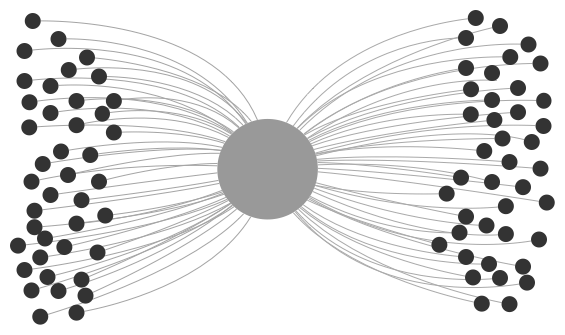Search Engine Positionning Software Suite
From 1996 to 2007
History
The evolution of search engine positioning (SEO) is an area that evokes a sense of nostalgia. In the early days, SEO was simple—just place keywords in the "meta keyword" tag and manually register on search engines like Alta Vista, Excite, and Infoseek.
In late 1998, I discovered a study by IBM on the visual representation of the Internet, known as "The Butterfly's Shape." This study revealed that the Internet was structured with "incoming" and "outgoing" sites, governed by "authority sites"—a concept that contrasted with the commonly held spider-web view.
Inspired by this study, I set up a network of over a hundred websites designed to mimic the "Butterfly's Shape" and boost my clients' sites to the top search engine rankings. This involved configuring Apache servers, managing DNS, automating tasks with Cronjob, and more.
Following the ".com crash" in 2000, most search engines were absorbed by Yahoo (Inktomi), clearing the way for Google to dominate. Interestingly, Google's initial "Page Rank" algorithm was based on the same IBM study I had utilized.
Between 2001 and 2005, my technological edge allowed me to consistently secure the top 10 positions in Google for most keywords. I implemented over 100 different HTML rules and structures, ensuring that whenever Google updated its classification criteria, I always had an HTML template ready to maintain top rankings.
SaaS Developed
- myPositioner
A self-service tool that generated position reports for around 20 popular search engines of the time. - SearchCarpenter
A project management platform dedicated to SEO, featuring blog management, directory entry monitoring, position report access, and a customer email module. - myKeywordFinder
Keyword research software that indexed 200 million combinations and predicted traffic for keywords positioned in the top 10 of Google, Yahoo, and MSN.
Development Challenges
- Undetectable Search Engine Scrapping Robot.
- WebSite Scrapping robot used to extract text and keyword of competitors.
- Creation of a Copy generator.
- Text Copy randomizer.
- Automated PDF Renderer.
- Database of 200 Million keyphrases/hits.
- Created a method to access instantly the result of searches in the Database without indexing.
- Prediction algorithm based on the position of keywords in the search engine and the rate of clicks to expect.



IBM INTERNET MAP EARLY 1997 & GOOGLE PAGERANK

Entry WebSites
Authority Sites
Destination Sites
Lower PageRank
High PageRank
Highest PageRank